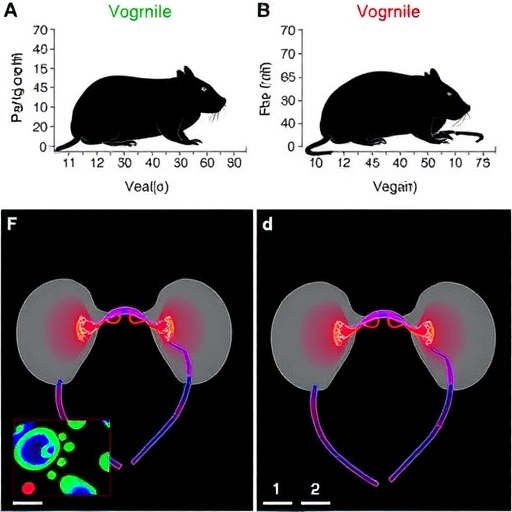JAK inhibitors act by targeting and suppressing specific cellular signaling pathways involved in inflammation. These pathways, essential for modulating immune responses, are crucial in conditions characterized by excessive and damaging inflammation. However, the NTNU research team, led by Professor Denis Kainov and researcher Erlend Ravlo, has demonstrated that these same pathways also play a pivotal role in the body’s frontline defense against viral infections. By inhibiting JAK enzymes, the drugs compromise antiviral gene expression, effectively disarming the cells’ ability to resist viruses.
Their experimental investigations reveal that JAK inhibitors dampen the expression of interferon-stimulated genes, which are critical components of the innate immune response. These genes encode proteins that identify, block, and destroy viral particles within healthy cells, preventing infection and spread. Suppressing this gene response removes a vital barrier, permitting viruses to replicate and disseminate more freely within the host organism.
The viruses examined in the study include notable human pathogens such as influenza A virus, the causative agent of seasonal flu; SARS-CoV-2, responsible for the COVID-19 pandemic; the adenovirus family, which can cause various respiratory and eye infections; and Rift Valley fever virus, a mosquito-borne zoonotic virus with potential for severe illness. Demonstrating increased vulnerability to such diverse viral agents suggests a generalized immunosuppressive effect induced by JAK inhibitors.
Using sophisticated organoid models derived from human lung, ocular, and neural tissues, the researchers simulated infection dynamics in a controlled environment. These mini-organs, combined with advanced virological assays and gene expression profiling, allowed for precise dissection of how JAK inhibitors modulate cellular antiviral defenses. The findings showed a consistent pattern: treated organoids exhibited decreased antiviral gene activity and higher viral loads compared to untreated controls.
Clinically, these findings raise red flags, especially for patients with latent or active viral infections who are receiving JAK inhibitors to manage autoimmune diseases. Immunosuppression, while beneficial in reducing pathological inflammation, may inadvertently create an environment conducive to viral replication and enhanced disease severity. This hidden risk underscores the need for vigilant monitoring of patients on such treatments during viral outbreaks, including annual influenza seasons and pandemic conditions.
Nevertheless, the immunomodulatory properties of JAK inhibitors are not solely detrimental. The researchers note that, when utilized judiciously, these drugs could assist in experimental settings such as vaccine research and antiviral drug screening by providing a controlled system for studying viral propagation without the full interference of innate immunity. This dual role highlights the importance of nuanced understanding and tailored application in both clinical and research contexts.
The study advocates for a balanced approach to administering JAK inhibitors, urging healthcare professionals to weigh potential risks in viral susceptibility against therapeutic benefits. Particularly, during high-risk periods of viral transmission, re-evaluation of immunosuppressive regimens may be warranted to prevent exacerbation of viral illnesses. Additionally, patients should be informed of these risks and monitored for signs of viral infection.
Further comprehensive research is recommended to delineate the precise molecular mechanisms underpinning this enhanced viral susceptibility. Longitudinal patient studies and clinical trials can provide additional insights into the real-world implications of JAK inhibitor-induced immunosuppression. This could ultimately guide safer prescribing practices and development of adjunctive therapies to safeguard against viral complications.
Professor Kainov emphasizes the transformative potential of these findings to reshape current clinical paradigms. “Our work exposes a critical intersection between immunomodulation and infectious disease risk—a nexus that must be carefully managed to optimize patient outcomes,” he explained. The interdisciplinary collaboration integrating clinical medicine, molecular biology, and virology sets a new standard for drug safety evaluation in the era of emerging infectious threats.
This research was supported by significant contributions from multiple institutions and funding agencies, reflecting the urgency and collaborative spirit essential in confronting public health challenges. The Central Norway Regional Health Authority, South-Eastern Norway Regional Health Authority, the Research Council of Norway, and the Swedish Research Council all played instrumental roles in facilitating this important scientific advancement.
In summary, while Janus kinase inhibitors represent a breakthrough in managing immune dysregulation, their capacity to erode innate immune barriers and promote viral propagation calls for cautious clinical application and further investigation. The insights gained from this study chart a path toward safer drug design and informed healthcare decisions in an increasingly interconnected viral landscape.
Subject of Research: Cells
Article Title: JAK inhibitors remove innate immune barriers facilitating viral propagation
News Publication Date: 2-May-2025
Web References: http://dx.doi.org/10.1093/narmme/ugaf017
References: Erlend Ravlo, Aleksandr Ianevski, Marius Nårstad Skipperstøen, Hilde Lysvand, Jørn-Ove Schjølberg, Ole Solheim, Wei Wang, Miroslava Kissova, Marthe Vestvik, Olli Vapalahti, Teemu Smura, Hanna Vauhkonen, Valentyn Oksenych, Friedemann Weber, Mårten Strand, Magnus Evander, Janne Fossum Malmring, Jan Egil Afset, Magnar Bjørås, Denis E Kainov, JAK inhibitors remove innate immune barriers facilitating viral propagation, NAR Molecular Medicine, 2025, ugaf017.
Keywords: Janus kinase inhibitors, JAK inhibitors, antiviral immunity, innate immune response, viral propagation, SARS-CoV-2, influenza A, adenovirus, Rift Valley fever virus, immunosuppression, autoimmune diseases, rheumatoid arthritis, gene expression, organoid technology.
Tags: autoimmune disease treatment and viral risksgroundbreaking study on drug effectsimmune defense suppression by medicationsimpact of medications on immune responseinflammation pathways and viral resistanceinnate immune system and drugsinterferon-stimulated genes and virusesJAK inhibitors and viral transmissionJanus kinase inhibitors side effectsNAR Molecular Medicine research findingsrheumatoid arthritis medication implicationsviral propagation and patient care






